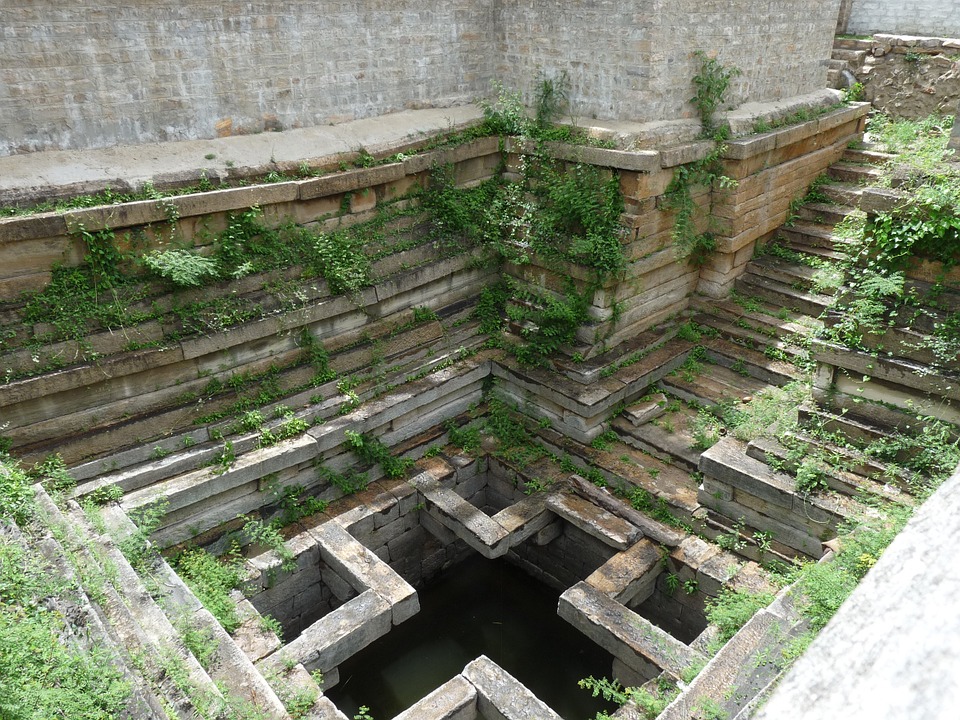
Temple tanks may hold key for solving water crisis in Chennai

While Chennai is grappling with an acute water crisis, described as the worst in the last two decades, the focus is now on the ancient temple tanks.
Temple tanks are indicators of the aquifers in the area and the tanks are seen as water reservoirs, when maintained well, ensuring a healthy water table. Talking to The Federal, Sudheendra NK, director, Madras Terrace Architects, which is associated with a project that is also focused on restoring temple tanks explained that it replenishes the water levels in and around a radius of 1 kilometre.
“When the rain water is not directed to recharge aquifers, it is lost. Clay soil by nature doesn’t let the water seep into the sandy layer, but temple tanks enable the percolation. And this is why they were built in the first place by several kings across South India,” Sudheendra said.
He added that, however, with modern times, garbage around the temple premises and oil spills are sources of contamination. He observed, “Direct collection of rains in the tanks are not sufficient and the water from the surrounding neighbourhood should be let in. It is like a catchment area for the surroundings flanking it. It is doable, but the feeding lines or the inlets have to be clean. There are examples from recent times like the Mahamaham temple tank in Kumbakonam or the Adi Jagannatha Perumal temple near Rameswaram.”
According to Sultan Ahmed Ismail of Ecoscience Research Foundation, the temple tanks, therefore, should be planned focussing on the infrastructure inside and equipped with constructed wetlands (stones, pebbles and plants) that can purify the water collected and let into the tank. He pointed out that over time, sewage and stormwater lines have been linked, increasing the chances of contamination of water let into the tank.
Restoring water tanks
Several citizen groups have worked on restoring the tanks in the city. In Velachery, the Dandeeswarar temple tank measuring over an acre has been replenished by 100-odd people. Kumara Raja, a resident of Velachery, said, “We have been fighting hard to save the temple tank from being reduced to a swampy cesspool. Now we await monsoons to see water in it.”
Similarly, the Kothandaramar temple in West Mambalam has also found patronage among residents. N Suresh, organiser, Young Patriots who worked on the temple tank for over eight months, said, “We had to explain the use and significance of the tank to the locals for their cooperation. In fact, we are looking at ways to increase public participation along the banks with a footpath so that the earlier issues don’t crop up again.”
One of the oldest parts of the city, Mylapore is steadily working towards replenishing at least six temple tanks, including the Keshavaperumal and Madhava Perumal temples. Explaining the project R Natraj, MLA-Mylapore, said that the residents of the four Mada Streets around the temples have been brought on board. He added, “The water during rains from the four streets will be linked directly into the tanks, rather than sending them into the sea through the Buckingham Canal. This was the idea with which the tanks were built originally. At the moment, the tanks are empty because the groundwater is completely drawn through the borewells around the area.”
Historical significance
Venkatesh Ramakrishnan, historian-writer, pointed out that the city has some huge temple tanks like the ones in Kapaleeswarar temple, Triplicane’s Parthasarathy temple and Thiruvanmyur’s Marundeeswarar temple. He added, “You know that they have captivated the fancy of some during the British rule. There are a number of paintings of the tanks by an employee of the East India Company called Daniel, who seemed fascinated by the beautiful landscapes of the tanks.”
Ismail added that often the temple had groves along with the tanks, but the groves were replaced by shops that were seen as ways to generate revenue and there began the end of their maintenance.


